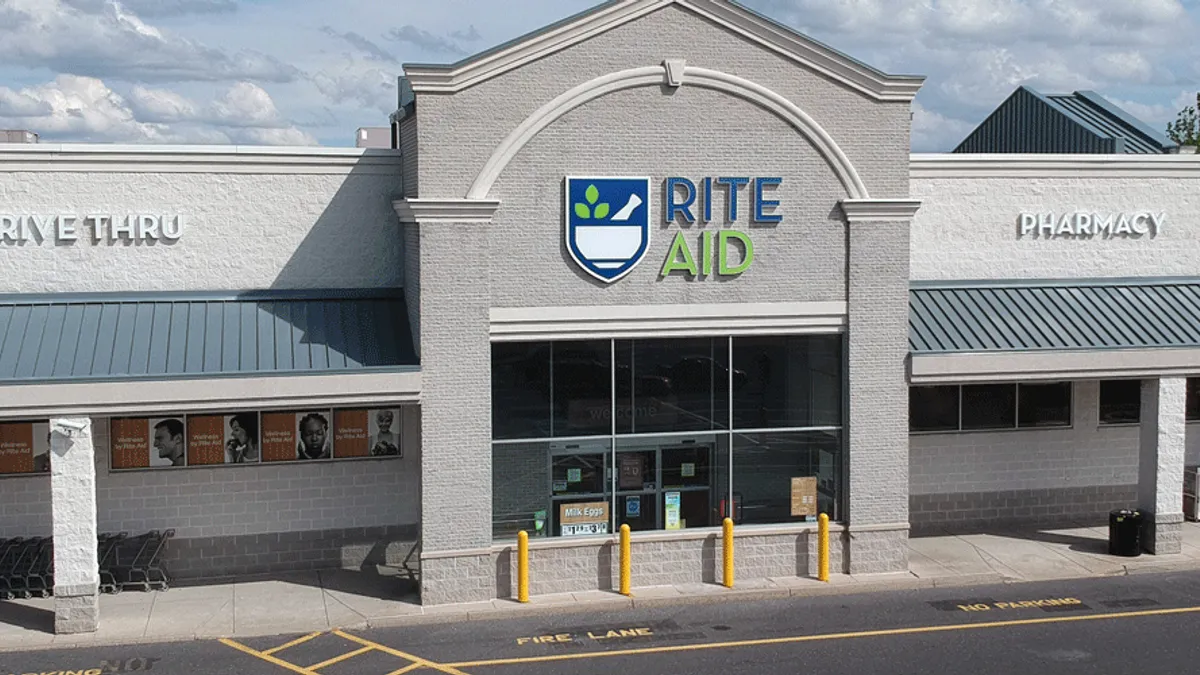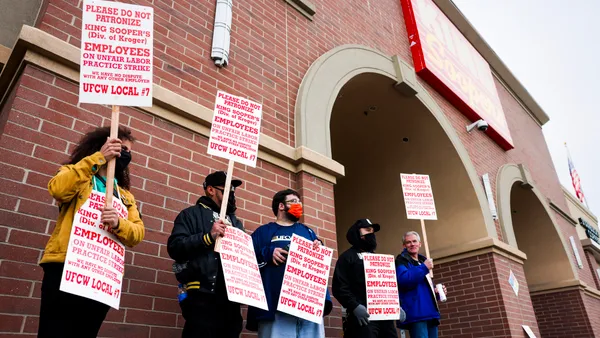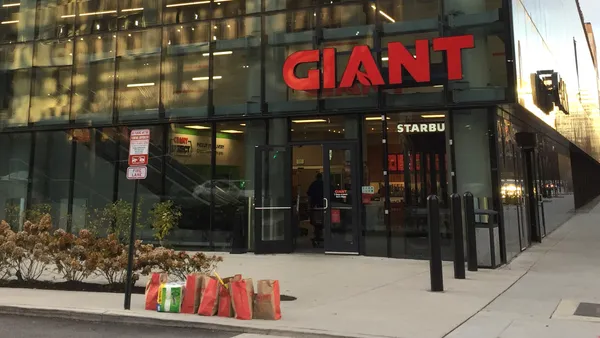Dive Brief:
- Rite Aid on Sunday filed for Chapter 11 bankruptcy protection in New Jersey. The company said in an announcement that some of its lenders have offered $3.45 billion in new funding to provide the company liquidity in bankruptcy.
- Bankruptcy will also enable Rite Aid to shrink an unprofitable store footprint, manage a debt load that’s reached nearly $4 billion and regain more favorable trade terms with vendors, the company said in court documents.
- Also Sunday, Rite Aid announced the appointment of Jeffrey Stein as CEO and chief restructuring officer, effective immediately. Stein will also serve as a member of the board of directors and replaces interim CEO Elizabeth “Busy” Burr, who had led the company since January. Burr will remain on the board.
Dive Insight:
In court documents, Stein said “a confluence of operational and financial factors have stressed Rite Aid’s financial condition and necessitate a comprehensive reorganization.” Stein outlined six issues that contributed to the company’s untenable financial position.
They include substantial debt, which limits the company’s ability to execute turnaround initiatives and make in-store investments; financial and operational headwinds; a “sub-optimal retail footprint” and $80 million each year in “dead rent” costs from leases it can’t exit; and competitive pressures.
"The announcement of Rite Aid's bankruptcy is a sobering reminder of today's evolving dynamics within the retail industry,” James Gellert, executive chairman of financial analytics firm RapidRatings, told Retail Dive in an email. “With [a financial health rating] of just 21 out of 100, Rite Aid faced an uphill battle further complicated by litigation troubles and set against the backdrop of a high-interest rate environment with rapidly shifting consumer demands.”
Rite Aid said in court documents it has between $1 billion and $10 billion in liabilities and assets and more than 100,000 creditors. The company’s top three creditors — pharmaceutical company McKesson, U.S. Bank Trust National Association and health insurer Humana — are collectively owed more than $1 billion.
“It became evident that a restructuring through Chapter 11 would best position Rite Aid for long-term success,” Stein said. “An orderly process — with support from key creditors — should help the company maintain trade credit and obtain post-petition financing to preserve thousands of jobs, continue operations in Chapter 11, and take the necessary steps to right-size the business for a successful emergence.”
The company also said it has entered into an agreement with MedImpact Healthcare Systems to acquire Rite Aid’s Elixir Solutions pharmacy benefit manager. Under the terms of the agreement, MedImpact will serve as the stalking horse bidder in a court-supervised sale process. In the interim, Elixir Solutions is maintaining regular operations. Elixir Insurance is not part of Rite Aid’s Chapter 11 or the proposed deal with MedImpact, and it is also maintaining regular operations.
Established in 1962, the Philadelphia-based company said in court documents that it has 2,111 stores in 17 states, seven distribution centers, 9,000 vendors and 45,000 employees. It fills about 200 million prescriptions annually.
News emerged in late August that the company would likely file for bankruptcy. Those Chapter 11 rumblings caused trade terms to contract, with vendors increasingly demanding security deposits, cash on delivery or cash in advance. Stein said Rite Aid lost more than $100 million in liquidity in September and early October due to tighter trade terms.
Rite Aid also faces more than 1,600 opioid-related lawsuits. The company is accused of contributing to America’s opioid epidemic by knowingly oversupplying prescription painkillers.
“Rite Aid could use a Chapter 11 bankruptcy plan to pause most lawsuits and channel opioid liability claims to a trust,” Alessandra Glorioso, a bankruptcy partner at law firm Dorsey & Whitney, said in emailed comments. “However, bankruptcy may not give Rite Aid a breathing spell from the Department of Justice actions, because some bankruptcy courts find that False Claims Act suits are an exercise of the government's police power, which is exempt from the automatic stay.”
The company also faces litigation related to contract disputes, other government investigations and securities matters. The ongoing lawsuits are affecting the company’s liquidity and complicate the ability to explore out-of-court resolutions, Stein said.
“In a different market environment,” Gellert said, “Rite Aid may have been able to extend its fuse life through an 11th-hour capital grab as other companies, such as GameStop and AMC, have been able to do in the past few years. However, given the mountain of risks facing RiteAid, retail investors are now unwilling to play ball and institutional investors are more circumspect and expensive than any time in the last decade.”
Correction: A previous version of this story misstated James Gellert's title. He is executive chairman of RapidRatings.















